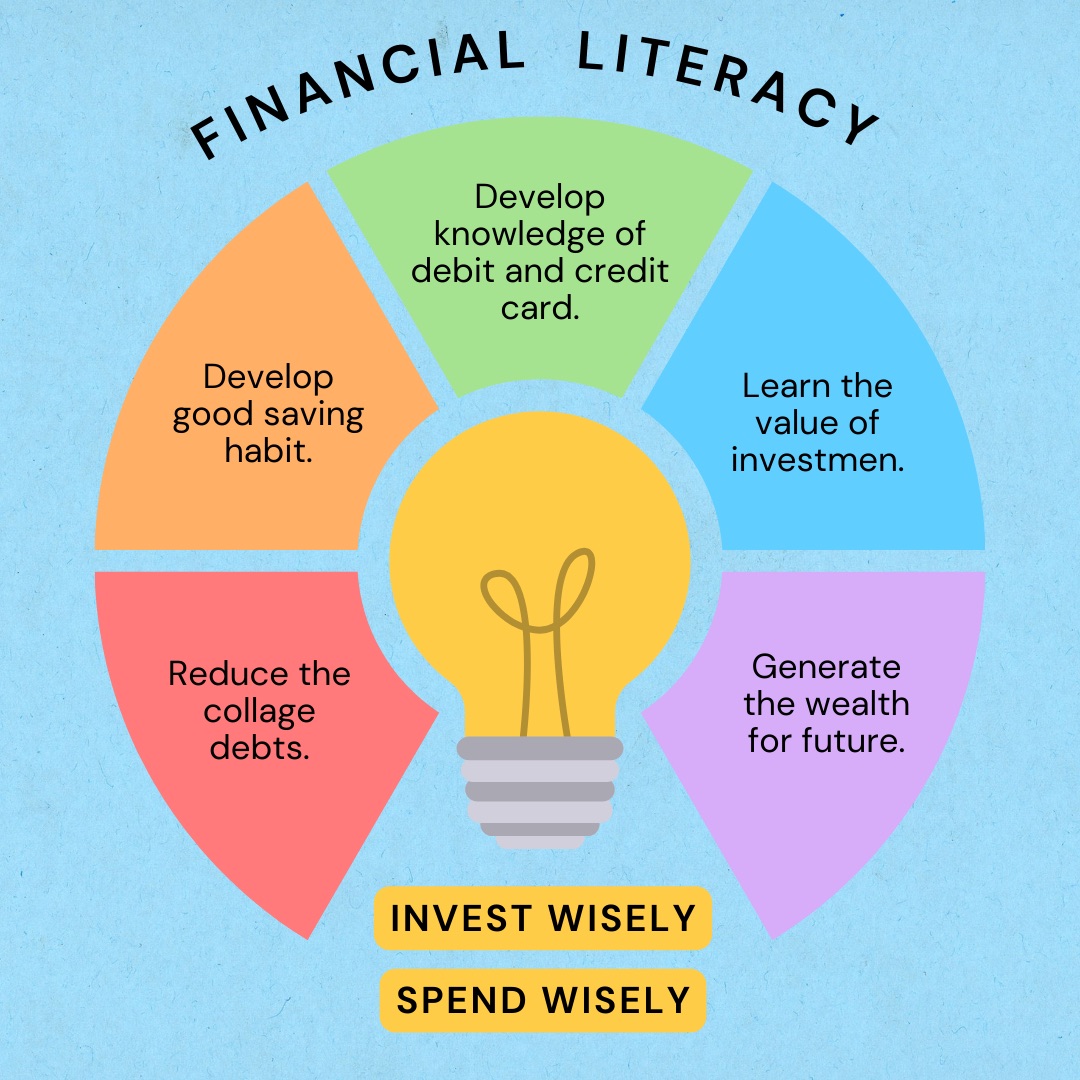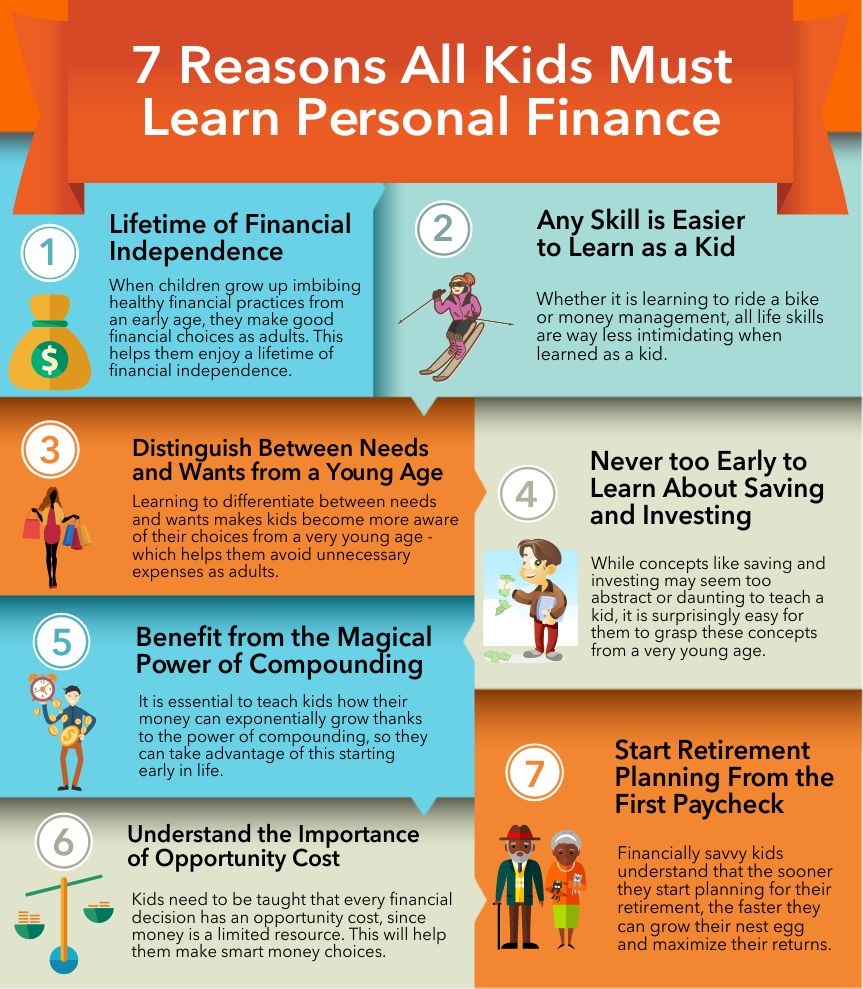Financial Literacy for Teens: Empowering the Next Generation
In today’s rapidly changing financial landscape, understanding money management is crucial, especially for teens preparing to enter adulthood. Financial literacy equips young people with the necessary skills to navigate their financial future, from budgeting and saving to investing and understanding credit. This article explores why financial literacy is essential for teens, key concepts they should learn, practical steps for improvement, and resources to help them thrive.

Why Financial Literacy Matters for Teens
The Importance of Early Financial Education
Financial literacy refers to the ability to understand and effectively manage personal finances. Teaching this skill to teens can have a profound impact on their future. According to a study by the National Endowment for Financial Education, teens who receive financial education are more likely to engage in positive financial behaviors, such as saving and budgeting, than those who do not.
Long-Term Benefits of Financial Literacy
The benefits of financial literacy extend beyond immediate financial gains. Teens who understand how to manage money effectively are less likely to incur debt, can plan for their future, and are better equipped to handle life’s financial challenges. Financially literate teens are also more likely to save for college, buy their first car, or even purchase a home in the future.
Key Concepts of Financial Literacy
Budgeting Basics: Creating a Personal Budget
One of the fundamental aspects of financial literacy is budgeting. A budget is a plan that outlines how income will be spent and saved. Here are some steps for creating a personal budget:
- Track Income: Identify all sources of income, including allowances, part-time jobs, and gifts.
- List Expenses: Categorize spending into fixed expenses (like subscriptions) and variable expenses (like entertainment).
- Set Savings Goals: Decide how much to save each month for future needs or wants.
- Adjust as Necessary: Review and adjust the budget regularly to reflect changing financial circumstances.
Understanding Saving and Interest Rates
Saving is crucial for financial stability. Teens should learn about different savings accounts, the importance of emergency funds, and how interest rates work. The earlier teens start saving, the more they can benefit from compound interest, which is the interest earned on both the initial principal and the accumulated interest.
“Saving is a crucial habit that can help you achieve your financial goals, whether it’s for college, a car, or your first home.”
The Basics of Investing: Stocks, Bonds, and Mutual Funds
Understanding investing is another vital component of financial literacy. Teens should be introduced to basic investment vehicles such as:
- Stocks: Shares in a company that can provide dividends and potential appreciation.
- Bonds: Loans made to corporations or governments that pay interest over time.
- Mutual Funds: Investment programs funded by shareholders that trade in diversified holdings.
Learning how to invest early can help teens build wealth over time and understand the risks and rewards associated with different investment strategies.

Credit Scores: What Teens Need to Know
Credit scores play a significant role in financial decisions, from applying for a credit card to securing a loan. Teens should understand the factors that affect their credit scores, such as payment history, amounts owed, length of credit history, new credit, and types of credit used. By understanding these concepts, they can start building a positive credit history early on, which can save them money in the long run.
Practical Steps to Improve Financial Literacy
Setting Financial Goals
Encouraging teens to set financial goals is a practical step toward enhancing their financial literacy. Goals can be short-term (saving for a concert ticket) or long-term (saving for college). Teaching teens to create SMART (Specific, Measurable, Achievable, Relevant, Time-bound) goals can help them stay focused and motivated.
Learning Through Apps and Online Resources
In our digital age, numerous apps and online resources can aid in teaching financial literacy. Some popular options include:
- Mint: A budgeting app that helps track spending and savings.
- Khan Academy: Offers free online courses on personal finance and investing.
- Investopedia: A comprehensive resource for learning financial concepts and terminology.
Real-Life Examples: Managing Allowance or Part-Time Jobs
Practical experience is invaluable. Teens can learn by managing their allowance or earnings from part-time jobs. Encourage them to keep track of their income and expenses, set a budget, and practice saving for their goals. This hands-on approach reinforces financial concepts and helps them understand real-world financial responsibilities.
The Role of Parents and Educators in Promoting Financial Literacy
How Parents Can Teach Financial Skills
Parents play a crucial role in instilling financial literacy in their children. Open discussions about money management, budgeting, and saving can create a solid foundation. Parents can also set a positive example by demonstrating healthy financial habits and encouraging their teens to participate in financial decisions.
Incorporating Financial Education into School Curriculums
Schools should prioritize financial education in their curriculums to equip students with essential skills. Subjects like mathematics can incorporate financial literacy lessons, teaching students how to calculate interest, manage budgets, and understand credit.
Conclusion: The Future of Financially Savvy Teens
In a world where financial decisions are increasingly complex, equipping teens with financial literacy is more critical than ever. As we foster a generation of financially savvy young adults, we not only empower them but also contribute to a healthier economy.

Final Thoughts: Preparing for a Financially Responsible Future
Empowering teens with financial literacy today ensures they are prepared to face the financial challenges of tomorrow. By instilling essential skills, setting realistic goals, and providing supportive resources, we can help the next generation thrive in their financial journeys.
For more insights on financial literacy for teens, explore additional resources here and here.
Financial Literacy: Building a Strong Foundation for Teens
In this digital age, equipping teens with financial literacy skills is more vital than ever. With the complexities of modern finances, teens must be prepared to manage their money wisely, make informed decisions, and develop a positive relationship with their finances.
Frequently Asked Questions (FAQs)
What is Financial Literacy?
Financial literacy refers to the knowledge and skills necessary to make informed and effective decisions regarding financial resources. It encompasses understanding budgeting, saving, investing, and managing debt.
Why is Financial Literacy Important for Teens?
Financial literacy is essential for teens because it empowers them to navigate the financial challenges of adulthood, helping them avoid debt, save for future goals, and understand the value of money management.
How Can Teens Improve Their Financial Literacy?
Teens can improve their financial literacy by:
- Taking Online Courses: Platforms like Khan Academy offer free courses on personal finance.
- Using Budgeting Apps: Apps like Mint and You Need A Budget (YNAB) can help track spending and savings.
- Participating in Workshops: Many community organizations offer financial literacy workshops tailored for teens.
At What Age Should Teens Start Learning About Finances?
It’s beneficial for teens to start learning about finances as early as middle school. Introducing basic concepts like budgeting and saving at this age can set the foundation for more complex topics later on.
The Importance of Practical Experience in Financial Literacy
Engaging in Real-Life Financial Decisions
While theoretical knowledge is essential, practical experience is where the magic happens. Teens can benefit significantly from engaging in real-life financial decisions. Here are some ways to incorporate practical learning:
- Managing Allowances: Encourage teens to manage their allowance, tracking how much they receive, spend, and save.
- Part-Time Jobs: Teens working part-time jobs gain firsthand experience in managing income, creating budgets, and understanding the value of money.
- Investment Simulations: Use stock market simulators to allow teens to practice investing without the risk. Websites like Investopedia’s Simulator provide an excellent platform for this.
The Power of Goal Setting in Financial Planning
Encouraging teens to set financial goals can enhance their understanding and commitment to financial literacy. Here’s how to guide them in this process:
- Identify Short-Term Goals: These can include saving for a new phone or a concert ticket.
- Establish Long-Term Goals: Long-term goals might involve saving for college or a car.
- Create a Savings Plan: Help them develop a plan to achieve these goals, including setting aside a specific amount each week or month.

Teaching Teens About Debt Management
Understanding debt management is crucial for teens as they enter adulthood. Here are key concepts to cover:
- Types of Debt: Explain the difference between good debt (like student loans) and bad debt (high-interest credit card debt).
- Managing Credit Cards: Teach them the importance of using credit responsibly, including making payments on time to avoid interest and maintain a good credit score.
- The Consequences of Debt: Discuss how excessive debt can lead to financial hardship and stress, emphasizing the importance of living within one’s means.
Community Resources for Financial Literacy
Local Workshops and Programs
Many communities offer financial literacy programs specifically designed for teens. Organizations like Junior Achievement and local credit unions often host workshops that provide practical, hands-on financial education.
Online Resources and Tools
Utilizing online tools can greatly enhance a teen’s financial education. Here are a few recommended resources:
- MyMoney.gov: A U.S. government website that offers tools and resources for managing money.
- Jump$tart Coalition for Personal Financial Literacy: An organization that provides resources and educational materials aimed at improving the financial literacy of students.
Conclusion: The Path to Financial Independence
As teens equip themselves with financial literacy skills, they pave the way toward a future of financial independence and stability. By understanding the core principles of budgeting, saving, investing, and debt management, they will be better prepared to make informed financial decisions throughout their lives.

In summary, investing in financial literacy for teens not only prepares them for personal success but also cultivates a generation that values financial responsibility. As parents, educators, and mentors, it is our duty to provide them with the tools they need to thrive in a complex financial world. By fostering these essential skills today, we ensure they are ready for the challenges of tomorrow.
Additional Resources
For more insights on enhancing financial literacy for teens, explore the following resources:
Encourage your teen today to take charge of their financial future!

